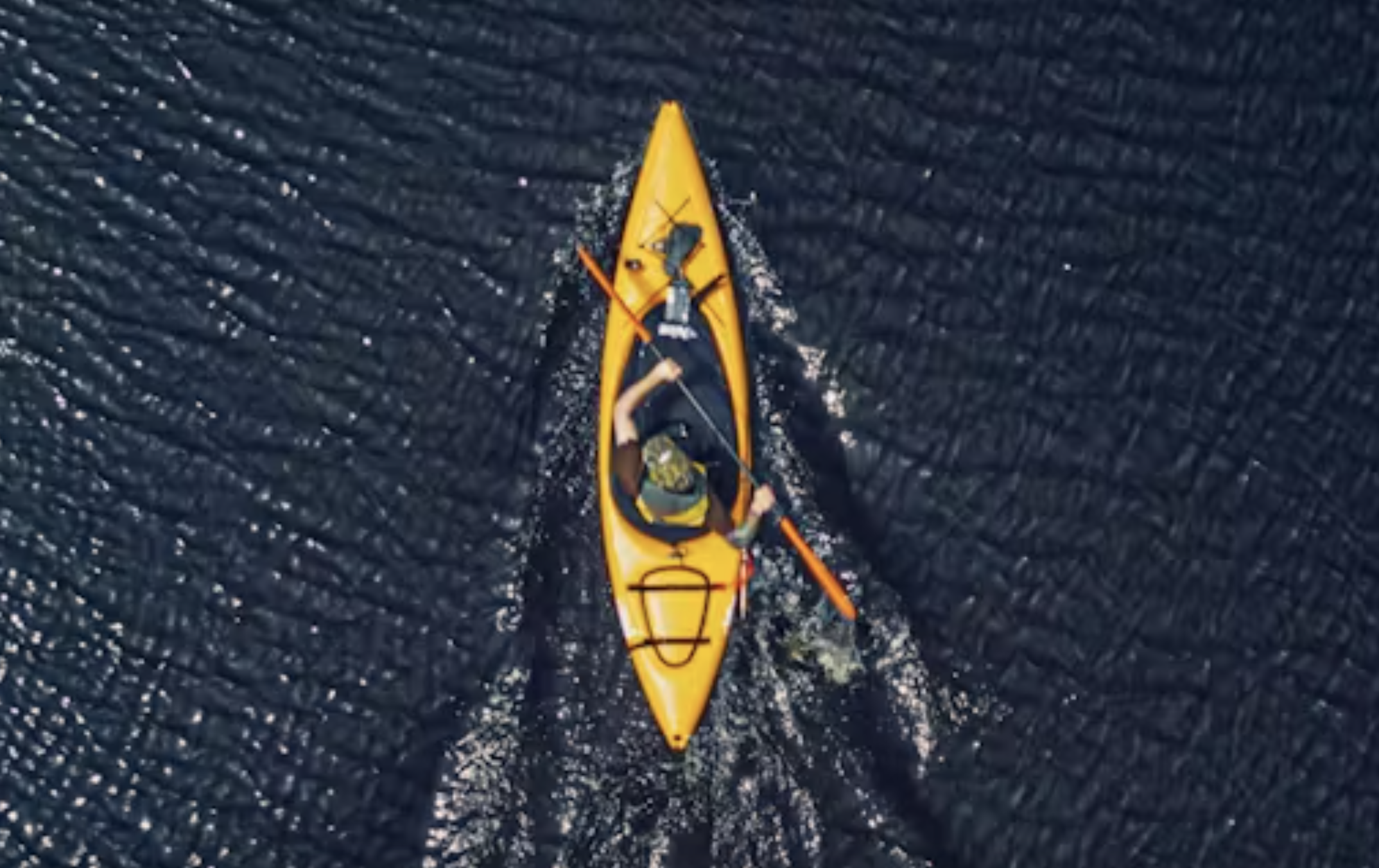Inshore kayak fishing, while exciting, can be intimidating for beginners. Fear not, for this guide by expert Christian Nelson will help you navigate the waves and reel in the fun!
Start Local, Learn Local:
- Begin by selecting a familiar location close by. Look for areas with docks, creeks, or signs of fish activity.
- Patience is key! Explore the chosen area and analyze unproductive spots to improve future catches.
Gear Up for Success:
- Invest in fish grips for safe handling and rod holders for convenience.
- A fish finder is a valuable tool to locate fish hiding underwater.
- Most importantly, prioritize safety with a Coast Guard-approved life jacket.
Understanding the Conditions:
- Weather Matters: Avoid strong winds and target protected areas.
- Tidal Movements: Fish during high tide’s rapid rise or fall for optimal current and feeding activity.

Becoming an Inshore Kayak Fishing Pro:
1. Choosing Your Inshore Battleground:
New to inshore fishing? Don’t be overwhelmed by vast choices! Pick a familiar spot close to home, where you’ve seen others catching fish. This “stomping ground” allows you to focus on learning the area’s intricacies and fish behavior. As you gain experience, you can explore further locations.
2. Mastering Your Kayak:
- Gear Up Light: Keep your initial trips light on gear. Sealed hatches aren’t entirely waterproof, so avoid valuables until you’re comfortable on the kayak.
- Practice Makes Perfect: Start slow and prioritize stability over extensive gear. Your comfort and confidence will grow with practice.
3. Decoding the Water:
While paddling offers limited coverage, target high-yield spots. Look for areas with docks, small creeks, or a combination of both. These areas concentrate fish activity. Take your time while fishing and analyze unproductive spots to learn from them.
4. Signs of Life:
Be observant! Birds diving, mullet jumping, or a “fish slick” (oily shine on the water caused by baitfish) indicate the presence of fish. Use these signs to your advantage and position yourself for a successful catch.
5. Must-Have Inshore Gear:
- Fish Grips: Crucial for safely handling fish, especially toothy or large ones, which can flip your kayak.
- Rod Holders: Provide easy access to fishing rods, especially when removing hooks from a catch.
- Fish Finder: Unlocks offshore areas with reefs and a variety of fish species. Choose a kayak-friendly model for easy mounting

Safety First, Always:
- Wear a high-quality, Coast Guard-approved life jacket at all times. Unexpected situations can arise, and being prepared is paramount.
Fishing When the Time is Right:
Weather: Unlike freshwater fishing, inshore kayak fishing is heavily influenced by weather. Avoid strong winds and waves by choosing protected areas based on the wind forecast.
Tides: The ideal time to fish is during high tide’s rapid rise or fall, as the current stirs up baitfish, attracting hungry predators.
Wind: Generally, aim for wind speeds below five miles per hour. If the wind blows from the East, fish the east side of bays or coves for calmer waters.
Inshore kayak fishing offers an unparalleled challenge and reward. With dedication and practice, you’ll master the art of finding fish and enjoy the thrill of catching exciting species. So, grab your gear, and get ready to experience the magic of inshore kayak fishing!
Images/Source: Curated





